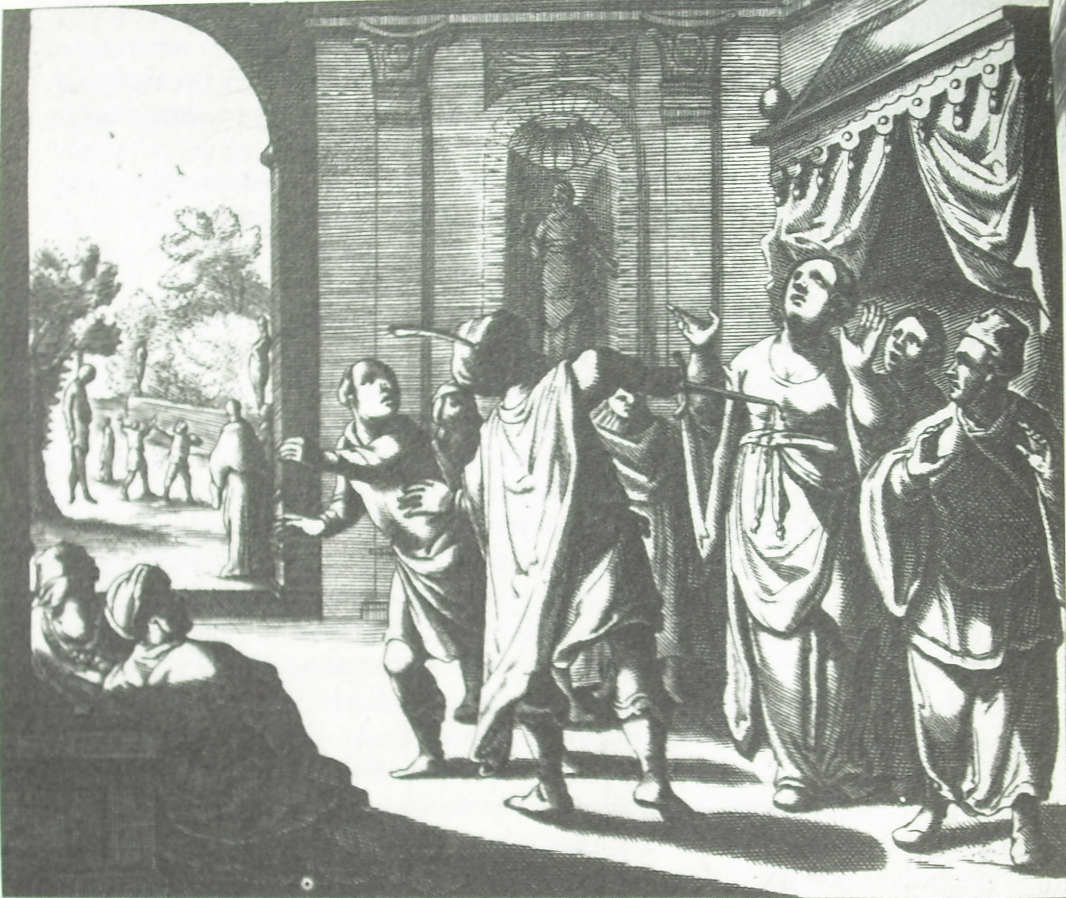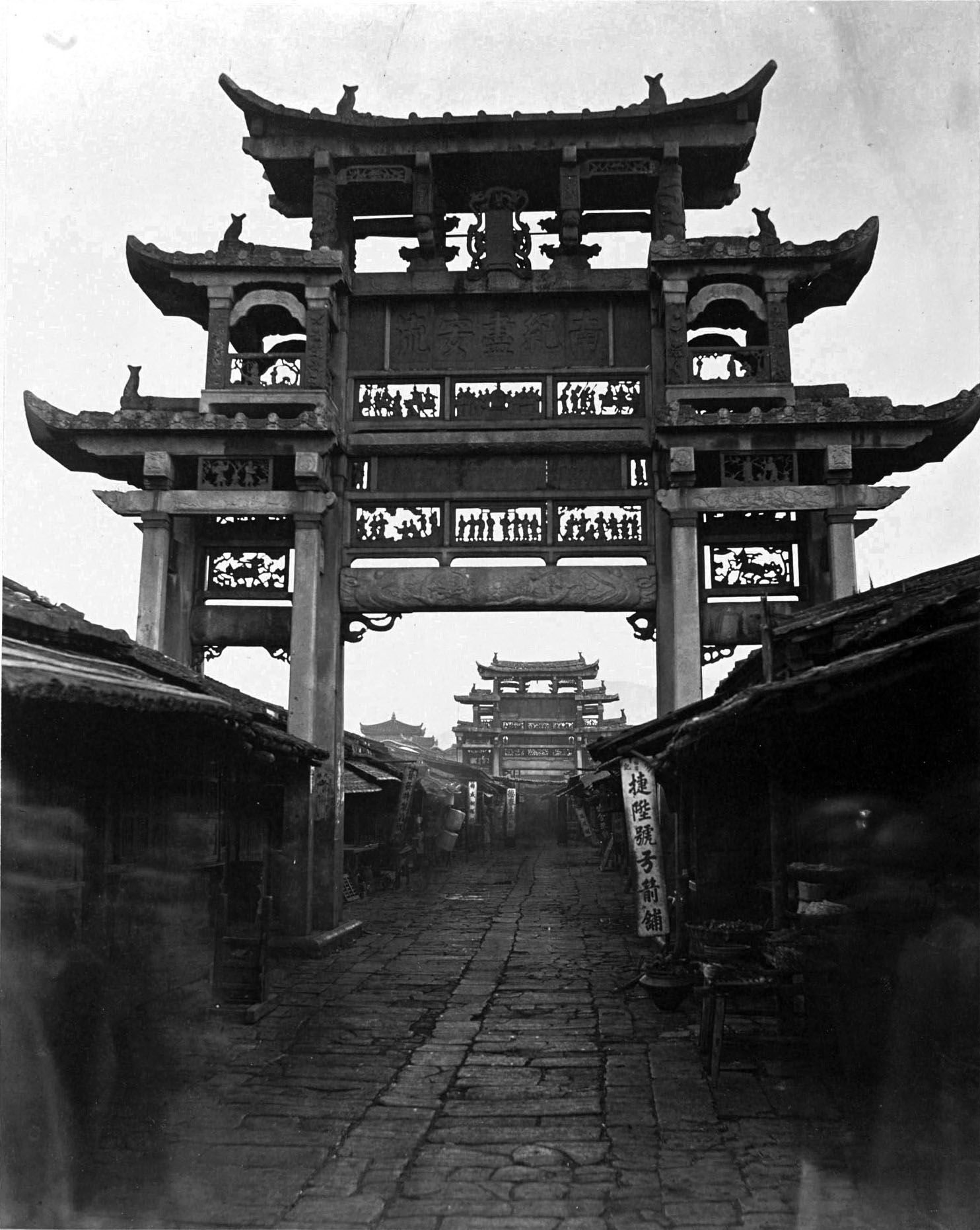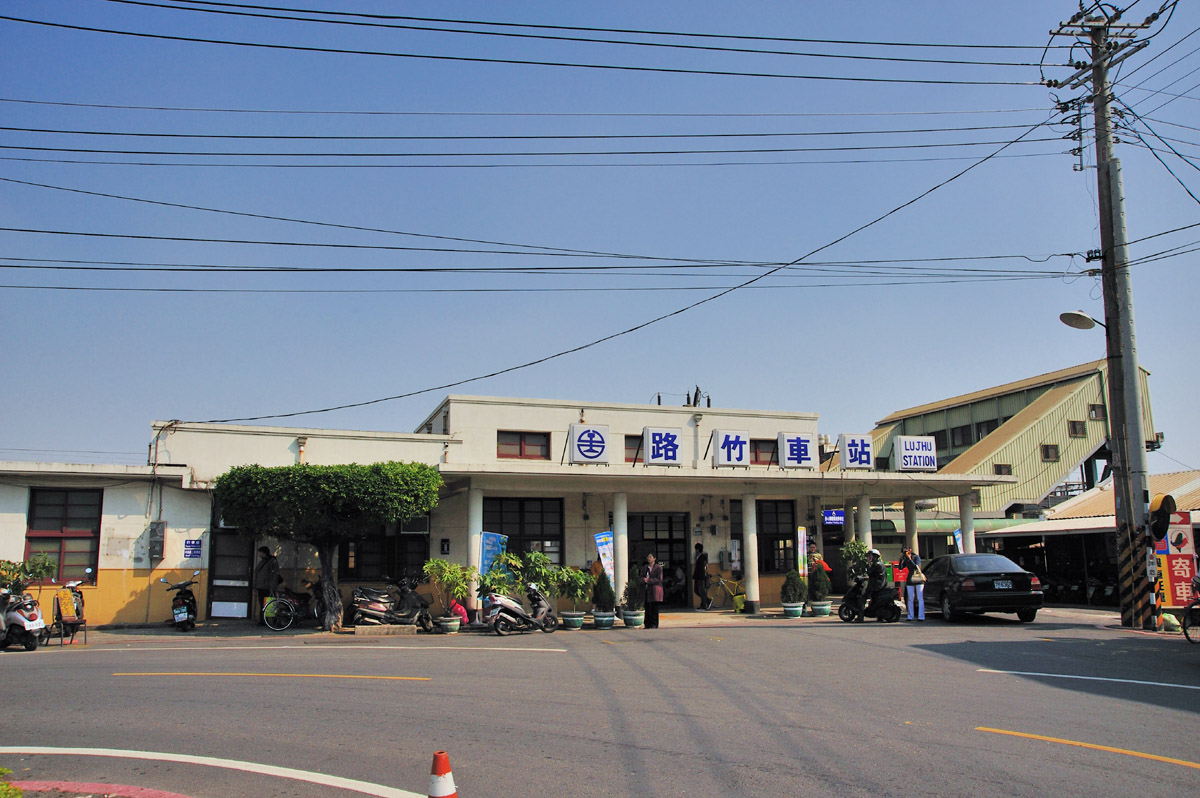|
King Ningjing
Zhu Shugui (1617 – 21 July 1683), courtesy name Tianqiu (天球) and art name Yiyuanzi (一元子), the Prince of Ningjing (寧靖王), was a royal member of the Ming and the last of the pretenders to the throne of Southern Ming after the execution of the Yongli Emperor in 1662. He took shelter to the Kingdom of Tungning in Taiwan after mainland China completely fell under the control of Manchu-led Qing dynasty. Despite his status as a royal member, he virtually shared no political power with the Zheng dynasts whom were the actual rulers of the kingdom. After the Qing forces successfully annexed Taiwan in 1683, he committed suicide. Nowadays there is a temple dedicated to the prince in Lujhu Township. Inside the temple is written Zhu's death poem. Early career Zhu Shugui was styled the General Who Assists the State (輔國將軍) while living in Jingzhou. He was later granted the title Prince of Changyang during the Regency of the Prince of Lu near the end of the Ming d ... [...More Info...] [...Related Items...] OR: [Wikipedia] [Google] [Baidu] |
Ming Dynasty
The Ming dynasty, officially the Great Ming, was an Dynasties of China, imperial dynasty of China that ruled from 1368 to 1644, following the collapse of the Mongol Empire, Mongol-led Yuan dynasty. The Ming was the last imperial dynasty of China ruled by the Han people, the majority ethnic group in China. Although the primary capital of Beijing fell in 1644 to a rebellion led by Li Zicheng (who established the short-lived Shun dynasty), numerous rump state, rump regimes ruled by remnants of the House of Zhu, Ming imperial family, collectively called the Southern Ming, survived until 1662. The Ming dynasty's founder, the Hongwu Emperor (1368–1398), attempted to create a society of self-sufficient rural communities ordered in a rigid, immobile system that would guarantee and support a permanent class of soldiers for his dynasty: the empire's standing army exceeded one million troops and the naval history of China, navy's dockyards in Nanjing were the largest in the world. H ... [...More Info...] [...Related Items...] OR: [Wikipedia] [Google] [Baidu] |
Chongzhen Emperor
The Chongzhen Emperor (6 February 1611 – 25 April 1644), personal name Zhu Youjian, courtesy name Deyue,Wang Yuan (王源),''Ju ye tang wen ji'' (《居業堂文集》), vol. 19. "聞之張景蔚親見烈皇帝神主題御諱字德約,行五,生於萬曆庚戌十二月二十四日寅時,崩於崇禎甲申三月十九日丑時。" was the 17th and last emperor of the Ming dynasty. He reigned from 1627 to 1644. " Chongzhen", the era name of his reign, means "honorable and auspicious." Zhu Youjian was son of the Taichang Emperor and younger brother of the Tianqi Emperor, whom he succeeded to the throne in 1627. He battled peasant rebellions and was not able to defend the northern frontier against the Manchu. When rebels under Li Zicheng reached the capital Beijing in 1644, he committed suicide, ending the Ming dynasty. The Manchu formed the succeeding Qing dynasty. In 1645, Zhu Yousong, who had proclaimed himself the Hongguang Emperor of the Southern Ming dynasty, gave ... [...More Info...] [...Related Items...] OR: [Wikipedia] [Google] [Baidu] |
Pescadores
The Penghu ( , Hokkien POJ: ''Phîⁿ-ô͘'' or ''Phêⁿ-ô͘'' ) or Pescadores Islands are an archipelago of 90 islands and islets in the Taiwan Strait, about west of the main island of Taiwan across the Penghu Channel, covering an area of . The archipelago collectively forms of Taiwan and is the smallest county of Taiwan. The largest city is Magong, on the largest island, which is also named Magong. The Penghu islands first appear in the historical record in the Tang dynasty and were inhabited by Chinese people under the Southern Song dynasty, during which they were attached to Jinjiang County of Fujian. The archipelago was formally incorporated as an administrative unit of China in 1281 under Tong'an County of Jiangzhe Province in the Yuan dynasty. It continued to be controlled by Imperial China with brief European occupations by the Dutch Empire (1622–1624) and Second French colonial empire (1885), until it was ceded to the Empire of Japan in 1895. ... [...More Info...] [...Related Items...] OR: [Wikipedia] [Google] [Baidu] |
Shi Lang
Shi Lang (1621–1696), Marquis Jinghai, also known as Secoe or Sego, was a Chinese admiral who served under the Ming dynasty, Ming and Qing dynasty, Qing dynasties in the 17th century. He was the commander-in-chief of the Qing fleets which destroyed the power of Koxinga, Zheng Chenggong's descendants in the 1660s, and led the conquest of the Zheng family's Kingdom of Tungning in Taiwan in 1683. Shi later governed part of Taiwan as a marquis. Early life and career Shi Lang was born to a distinguished lineage in Fujian, in 1621. He studied military strategy in his youth, and became particularly proficient in naval warfare. He was also famous for his strength, ferocity and martial skills in battle. Kangxi Emperor once described him as a fierce warrior who was also highly adept in military command skills, however, he was a blunt and rude person who lacked basic manners and courtesy. After fighting a number of minor operations locally with his father, he joined Zheng Zhilong's naval ... [...More Info...] [...Related Items...] OR: [Wikipedia] [Google] [Baidu] |
Zheng Keshuang
Zheng Keshuang, Prince of Yanping (; 13 August 1670 – 22 September 1707), courtesy name Shihong, art name Huitang, was the third and last ruler of the Kingdom of Tungning in Taiwan in the 17th century. He was the second son of Zheng Jing and a grandson of Koxinga (Zheng Chenggong). After surrendering to the Qing dynasty in 1683, he was ennobled as Duke of Hanjun (漢軍公), and lived the rest of his life in Beijing. Biography Zheng Keshuang was born in of the Kingdom of Tungning in Taiwan; the administrative centre of Chengtian Prefecture was at Fort Provintia. His father was Zheng Jing, the king of Tungning and the eldest son of Koxinga (Zheng Chenggong), the founder of Tungning. His biological mother was Lady Huang (黃氏), Zheng Jing's concubine. When Zheng Jing was leading a campaign against the Manchu-led Qing dynasty in China in the late 1670s, he designated his elder son, Zheng Kezang, as his heir apparent and put him in charge of Tungning's internal affairs. At ... [...More Info...] [...Related Items...] OR: [Wikipedia] [Google] [Baidu] |
Kaohsiung
Kaohsiung, officially Kaohsiung City, is a special municipality located in southern Taiwan. It ranges from the coastal urban center to the rural Yushan Range with an area of . Kaohsiung City has a population of approximately 2.73 million people as of October 2023 and is Taiwan's third most populous city and largest city in southern Taiwan. Founded in the 17th century as a small trading village named Takau, the city has since grown into the political and economic center of southern Taiwan, with key industries such as manufacturing, steel-making, oil refining, freight transport and shipbuilding. It is classified as a "Gamma −" level global city by the Globalization and World Cities Research Network, with some of the most prominent infrastructures in Taiwan. Kaohsiung is of strategic importance to the nation as the city is the main port city of Taiwan; the Port of Kaohsiung is the largest and busiest harbor in Taiwan and more than 67% of the nation's exports and i ... [...More Info...] [...Related Items...] OR: [Wikipedia] [Google] [Baidu] |
Lujhu District
Lujhu District, United States National Geospatial-Intelligence Agency () is a suburban district of Kaohsiung City, Taiwan. History After the handover of Taiwan from Japan to the Republic of China in 1945, Lujhu was organized as a rural township of Kaohsiung County. On 25 December 2010, Kaohsiung County was merged with Kaohsiung City and Lujhu was upgraded to a district of the city. Administrative divisions The district consists of Zhuhu, Dingliao, Xinda, Houxiang, Beiling, Shexi, Jiabei, Jianan, Xiakeng, Zhuyuan, Zhutung, Zhuxi, Wenbei, Wennan, SanyevYaliao, Shetung, Shezhong, Zhunan and Shenan Village.https://www.cec.gov.tw/pc/en/TV/nm64000002400000000.html Politics The district is part of Kaohsiung City Constituency II electoral district for Legislative Yuan. Education * Kao Yuan University * Shu Zen College of Medicine and Management Transportation * TRA Dahu Station * TRA Luzhu Station Tourist attractions * Yijia Guanyin Temple * Huashan Temple (dedicated t ... [...More Info...] [...Related Items...] OR: [Wikipedia] [Google] [Baidu] |
Tainan
Tainan (), officially Tainan City, is a Special municipality (Taiwan), special municipality in southern Taiwan, facing the Taiwan Strait on its western coast. Tainan is the oldest city on the island and commonly called the "Taiwan Prefecture, prefectural capital" for its over 260-year history as the capital of Taiwan under Dutch Formosa, Dutch rule, the Kingdom of Tungning and later Taiwan under Qing rule, Qing dynasty rule until 1887. Tainan's complex history of comebacks, redefinitions and renewals inspired its popular nickname "the Phoenix City". Tainan is classified as a "Sufficiency"-level global city by the Globalization and World Cities Research Network. As Taiwan's oldest urban area with over 400 years history, Tainan was initially established by the Dutch East India Company (VOC) as a ruling and trading base called Fort Zeelandia (Taiwan), Fort Zeelandia during Dutch Formosa, the Dutch colonial rule on the island. After Koxinga Siege of Fort Zeelandia, seized the Dutch ... [...More Info...] [...Related Items...] OR: [Wikipedia] [Google] [Baidu] |
Fort Provintia
Fort Provintia or Providentia, also known as Chihkan Tower (), was a Dutch outpost on Formosa at a site now located in West Central District, Tainan, Taiwan. It was built in 1653 during the Dutch colonization of Taiwan. The Dutch, intending to strengthen their standing, sited the fort at ''Sakam'', about due east from modern-day Anping. During the Siege of Fort Zeelandia (1662), the fort was surrendered to Koxinga, but was later destroyed by a rebellion and earthquakes in the 18th century. It was rebuilt afterwards in the 19th century under Qing rule. The fort's name derives from the Taiwanese aboriginal village recorded by the Dutch as ''Sakam'', which has developed into the modern-day Tainan. After growth in size and trade, the Chinese called it ''Chhiah-kham'', and surrounded it with high brick walls. It eventually became the capital of the whole island under the name of Taiwan-fu. In addition to the site's architectural and artistic significance, its library of dic ... [...More Info...] [...Related Items...] OR: [Wikipedia] [Google] [Baidu] |
Zheng Jing
Zheng Jing, Prince of Yanping (; 25 October 1642 – 17 March 1681), courtesy names Xianzhi () and Yuanzhi (), Art name, pseudonym Shitian (), was initially a Southern Ming military general who later became the second ruler of the Tungning Kingdom of Taiwan by succeeding his father Koxinga's hereditary title of "Prince of Yanping", reigned as a dynastic monarch of the kingdom from 1662 to 1681. Biography Born on 25 October 1642, he was the eldest son of Koxinga (Zheng Chenggong) and a grandson of the pirate-merchant Zheng Zhilong. After the Siege of Fort Zeelandia, conquest of Fort Zeelandia in 1662 by his father, Zheng Jing controlled the military forces in Xiamen, Amoy and Quemoy on his father's behalf, but the friction between him and his father was later provoked by a domestic dispute, as he secretly had an incestuous relationship with his brother's wet nurse, with whom he had a newborn son (Zheng Kezang), despite having been married. Koxinga was ashamed and resentful by h ... [...More Info...] [...Related Items...] OR: [Wikipedia] [Google] [Baidu] |
Fujian Province
Fujian is a province in southeastern China. Fujian is bordered by Zhejiang to the north, Jiangxi to the west, Guangdong to the south, and the Taiwan Strait to the east. Its capital is Fuzhou and its largest prefecture city by population is Quanzhou, with other notable cities including the port city of Xiamen and Zhangzhou. Fujian is located on the west coast of the Taiwan Strait as the closest province geographically and culturally to Taiwan; as a result of the Chinese Civil War, a small portion of historical Fujian is administered by Taiwan, romanized as Fuchien. While the population predominantly identifies as Han, it is one of China's most culturally and linguistically diverse provinces. The dialects of the language group Min Chinese are most commonly spoken within the province, including the Fuzhou dialect and Eastern Min of Northeastern Fujian province and various Southern Min and Hokkien dialects of southeastern Fujian. The capital city of Fuzhou and Fu'an of Ningde pre ... [...More Info...] [...Related Items...] OR: [Wikipedia] [Google] [Baidu] |
Koxinga
Zheng Chenggong (; 27 August 1624 – 23 June 1662), born Zheng Sen () and better known internationally by his honorific title Koxinga (, from Taiwanese: ''kok sèⁿ iâ''), was a Southern Ming general who resisted the Qing conquest of China in the 17th century, fighting the Qing dynasty on China's southeastern coast. Born in Kyushu, Japan to a Chinese father and a Japanese mother, Zheng rose through the Ming court via the imperial examinations and was serving as a '' Guozijian'' scholar in Nanjing when Beijing fell to rebels in 1644. He swore allegiance to Longwu Emperor, who favored and granted him the royal surname Zhu in 1645, a name he proudly used instead of his native Zheng surname for the rest of his life, hence popularizing his aforementioned honorific name. He was made the Prince of Yanping () by Yongli Emperor in 1655 for his stern loyalty and numerous anti-Qing campaigns. He was best known for defeating the Dutch East India Company's colonial state on Ta ... [...More Info...] [...Related Items...] OR: [Wikipedia] [Google] [Baidu] |







